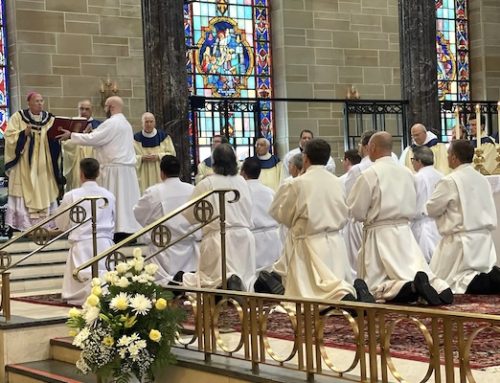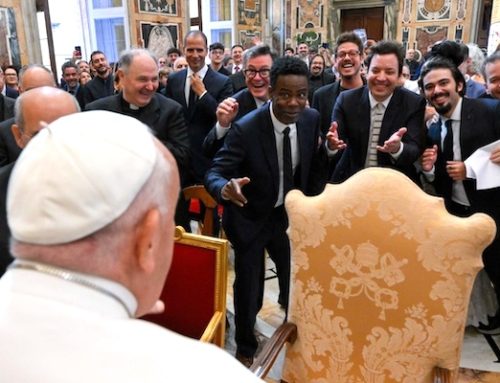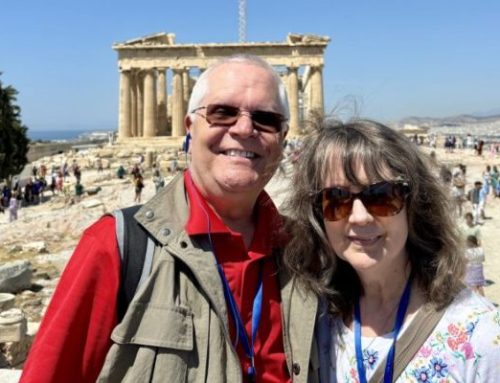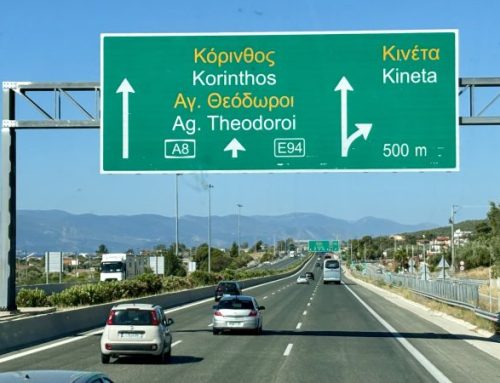If it’s Tuesday, it must be our last day for our journey in the footsteps of St. Paul, and we went out with a bang.
It began with our usual daily Mass — this one, at the beautiful Roman Catholic Cathedral of Athens, St. Denis.

Father Jeremy and I celebrated Mass on a side altar dedicated to St. Joseph.


After Mass, we boarded the bus to spend the morning exploring the area around the Parthenon, and climbing endless steps made of slippery marble to actually experience, up close and personal, one of the icons of ancient history.

About halfway up, we paused at Mars Hill, and I read from Acts 17 the words that Paul spoke at that spot:
Then Paul stood up at the Areopagus and said:
“You Athenians, I see that in every respect
you are very religious.
For as I walked around looking carefully at your shrines,
I even discovered an altar inscribed, ‘To an Unknown God.’
What therefore you unknowingly worship, I proclaim to you.
The God who made the world and all that is in it,
the Lord of heaven and earth,
does not dwell in sanctuaries made by human hands,
nor is he served by human hands because he needs anything.
Rather it is he who gives to everyone life and breath and everything.
He made from one the whole human race
to dwell on the entire surface of the earth,
and he fixed the ordered seasons and the boundaries of their regions,
so that people might seek God,
even perhaps grope for him and find him,
though indeed he is not far from any one of us.
For ‘In him we live and move and have our being,’
as even some of your poets have said,
‘For we too are his offspring.’
After that, the climb continued. What was it like? This short video shows what you can expect.
Finally, we made it to the top. My advice: wear shoes with a good grip and be prepared for lots of company.
But the view is spectacular.

And the building we encountered wasn’t too shabby either.
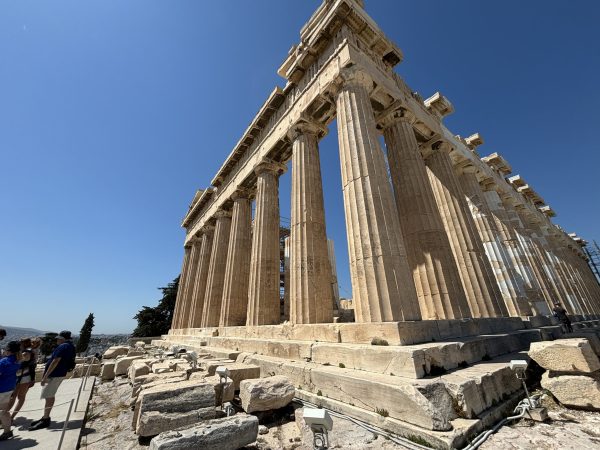

About the building, which was constructed nearly 500 years before the birth of Christ:
Its decorative sculptures are considered some of the high points of classical Greek art, an enduring symbol of Ancient Greece, democracy, and Western civilization.
The Parthenon was built in thanksgiving for the Hellenic victory over Persian Empire invaders during the Greco-Persian Wars. Like most Greek temples, the Parthenon also served as the city treasury.
Construction started in 447 BC when the Delian League was at the peak of its power. It was completed in 438 BC; work on the decoration continued until 432 BC.
What can top that? Not much. We finished our tour around noon and then headed out for other adventures. Some of our group went shopping; others took the tram to spend time at the beach. Siobhain and I went back to our hotel to crash. Lunch at a nearby Goody’s — the Greek eequivalent of McDonald’s — and a long nap after did the trick.
Tuesday evening, we had our farewell dinner, a tour group tradition, involving an expansive meal at a nearby restaurant — in this instance, a place called The Greco’s Project.
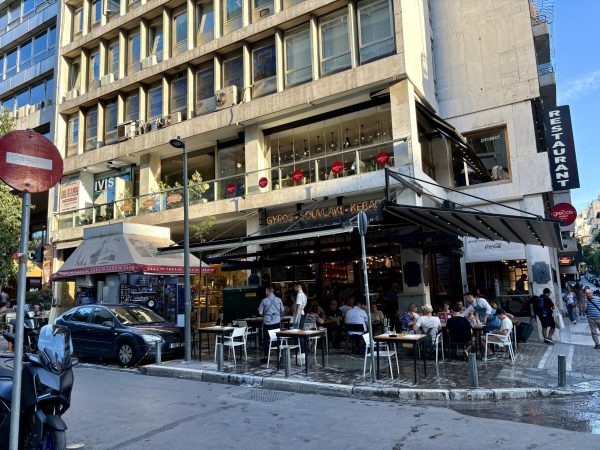

The food was traditional Greek, served family style, and it was uniformly excellent.


After that, we staggered back to the bus one more time, and then into our hotel lobby, to pack and get ready for our trip to the airport. Breakfast is at 6:30 and we depart at 7:00. Another long day awaits.
In my homily this morning, I spoke about what we can learn from being on pilgrimage in a place that was the very cradle of Christianity:
We can’t just go back home as the same people we were when we arrived. One of my favorite verses from Revelation proclaims, “Behold, I make all things new.”
One of the questions we should take from this week is: has this journey made me new? What do I see differently? How have I changed?
Because now, in a sense, you and I are Paul. We are Lydia. We are John. We are Prochorus. It’s up to us. We need to continue what they began, by remembering how they lived and what they left for us all these centuries later. It’s more than dead stones and relics. It’s the living faith. And we need to remember that by living our faith.
It is said that when he was an old man, St. John would be carried out of his cave in Patmos to greet people, new Christians, who wanted to see the beloved disciple, the last one still alive who had personally known Jesus Christ.
Using his last ounce of strength, he would tell them simply, “Love. Love. Love.” Someone once asked him why he always said that. He replied, “That was what the Master said.”
Another disciple, Dorothy Day, put it differently.
Dorothy Day wrote a column for the Catholic Worker called fittingly “On Pilgrimage.” In one of those columns, she wrote:
“When you love people, you see all the good in them, all the Christ in them. God sees Christ his son in us and so we should see Christ in others and nothing else and love them. There can never be enough of it.”







